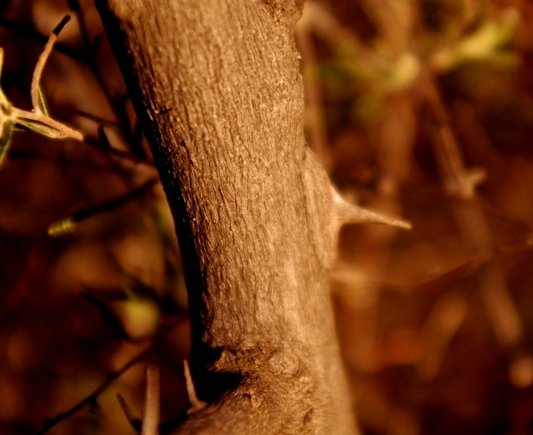Zanthoxylum capense young stem

Author: Ivan Lätti
Photographer: Jack Lätti
The bark of the small knobwood, in Afrikaans the kleinperdepram (small horses breast), as Zanthoxylum capense is commonly known, is grey and smooth on old trees. On this young stem it is still reddish brown.
The stem surfaces are characteristically armed with cone-shaped knobs tipped with straight (or sometimes hooked) spines, similar to rose spines. The knobs may survive the spines on older stems. It is these knobs that led to the common names given above.
In picture the base of the straight, tapering spine, hard and unyielding to the careless passerby, has a flat platform, not yet the bulging mound that makes knobwood knobwood.
The wood is used in the manufacturing of small items. It has an attractive, pale lemon-yellow colour with a wavy grain visible when freshly cut. It turns well (Coates Palgrave, 2002; Schmidt, et al, 2002; Grant, et al, undated).

